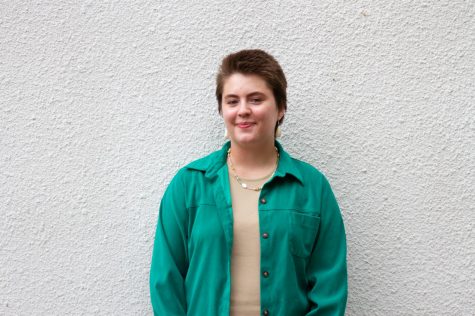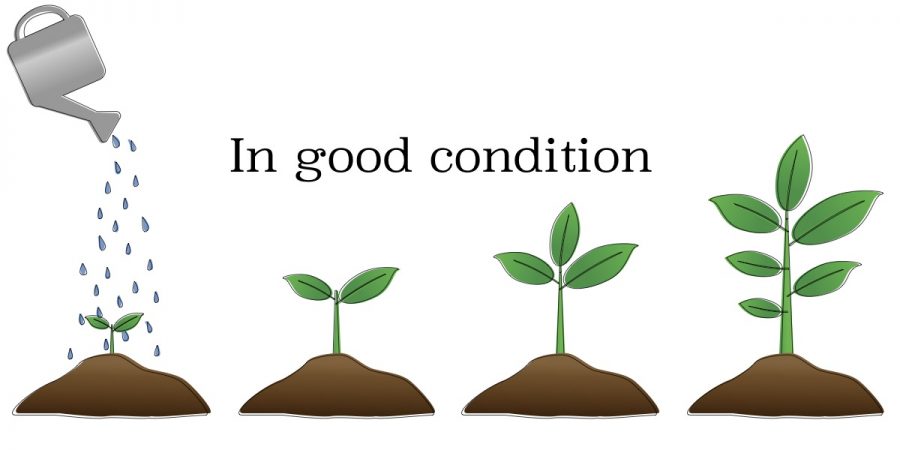In good condition
How color affects your mood
Photo by Submitted
The writer of this column acknowledges the disparity against those who are visually and physically impaired, which may affect their abilities to apply this column to their daily life.
At some point in our upbringing, we all have been asked the common ice breaker: “What is your favorite color?” — For me, I am always drawn to purple as my first choice.
However, in the last year, my eye has been drawn to the green that surrounds my daily life. Through the trees, my clothes — even my green backpack.
I often wondered: “Why does this color bring me so much enjoyment? Why do I now want everything I own to be surrounded by a green lush?”
The answer connects to your mental health and sensory abilities, through a concept known as color therapy.
Color therapy — officially titled chromotherapy — is the theory that colors and their wavelength frequencies can be beneficial toward physical and emotional balance within the body, according to Hello Alma.
Color therapy in the spiritual sense highlights color and their connection to each related chakra across your body. From your heart, to your third eye of wisdom on the forehead.
In this combination of science and therapy, each color possesses frequencies on a specific light vibration, which is related to different physical and mental symptoms.
Listed here are different colors and their targeted supports to the mind and body:
- Green: A cooling color which supports growth, nature, balance, calmness and acceptance
- Blue: Increases calmness, serenity, wisdom, communication, honesty and appreciation of beauty
- Yellow: Supports positivity, fun, personal power, logic and creativity
- Orange: A simulating color which aids in creativity, productivity, optimism and emotional expression
- Indigo: Enhances self-responsibility, inner strength, intuition, calmness and clairvoyance
These are only a select sample of colors and their meaning, as the color spectrum varies immensely in hue.
Not only can these colors appear throughout your day to day, but by selectively placing them within your environmental layout, their benefits flourish even more.
Listed here are creative ways to incorporate color therapy into your living space:
- Green: Make your own planter with unique greenery inside, purchase locally at Down to Earth Garden Center in Eau Claire
- Blue: Introduce this color through art or tapestries to hang up on the wall and purchase from local artists’ work at Tangled up in Hue
- Yellow: Add a splash of color in your school supplies, from yellow notebooks or journals, to aid productivity
- Orange: With this unique color, try utilizing it in combination with aromatherapy, such as essential oils. Utilize citrus based oils and colors to stimulate your mind throughout the day
- Indigo: Add a sense of calmness to your space with indigo throw pillows or blankets — it could aid to your dreams that evening
Other ways to incorporate color therapy into your daily routine include “Colorpuncture,” which is similar to acupuncture therapy or color yoga and meditation practices.
In the medical field, color therapy has become more accessible and understood — according to AdventHealth for Children — as the organization installed an “Ambient Experience” lighting system within patient rooms to achieve the positive effects of color therapy.
As much as I want to decorate my entire room green, it will be interesting to see how I myself can notice small variations in my mood and well-being when surrounded by new colors.
If one day you are feeling blue, try seeing how the color blue can help with growth and calmness. Or, add a splash of yellow to brighten your rainy days.
Try living your life in color. The benefits of color therapy can be seen gradually or in that moment, it’s just all in the eye of the beholder.
Nelson can be reached at [email protected].

Evelyn Nelson is a third-year Journalism and Environment, Society and Culture student. This is her fifth semester on The Spectator. She enjoys fulfilling her dream of being a barista, at SHIFT Cyclery and Coffee Bar. Stop by for some great coffee and conversation!

